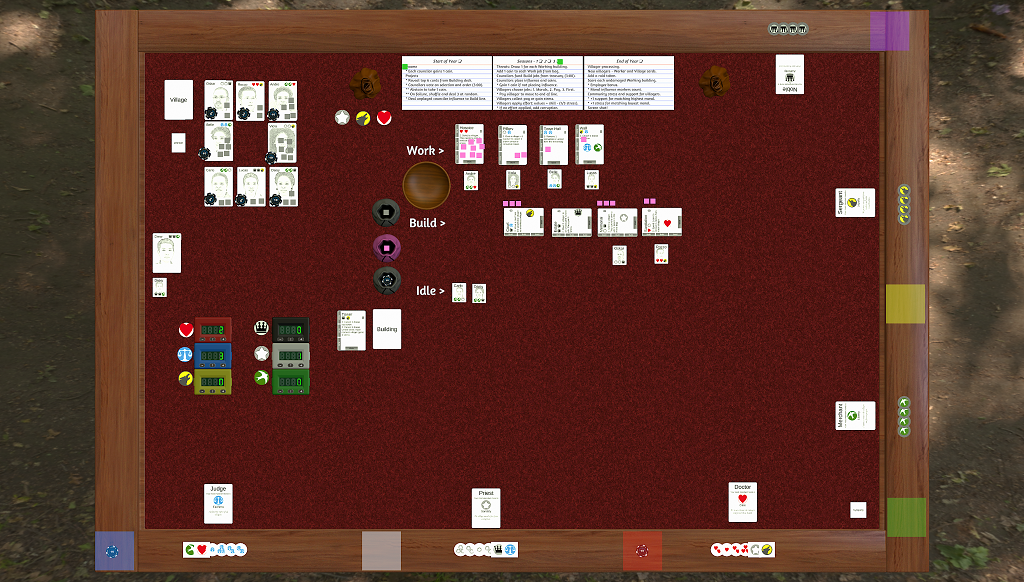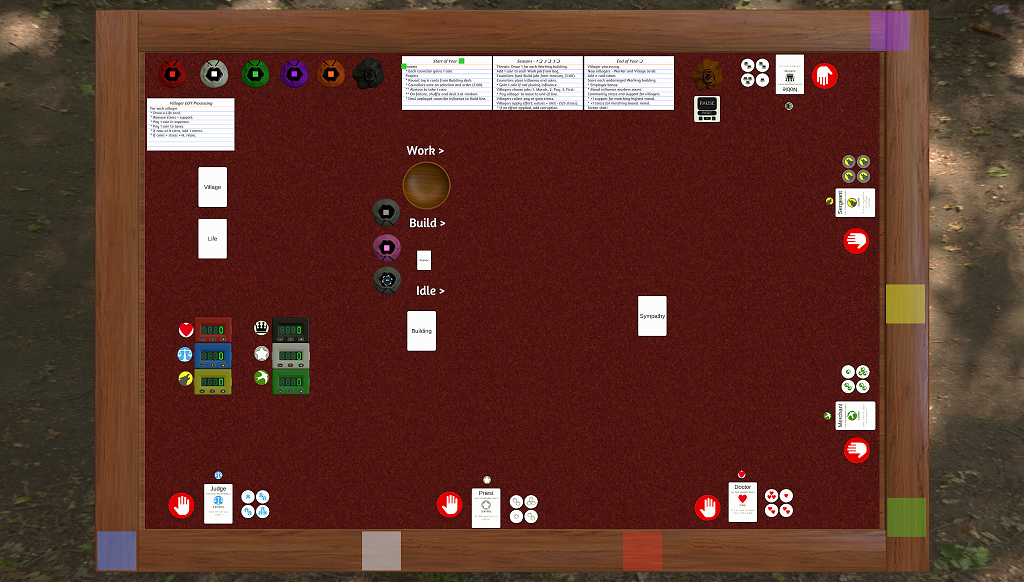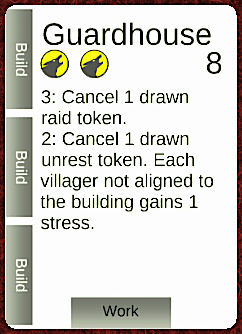I’ve redesigned the Building cards for my next non-solo playtest. Here’s what they were like before.
And here’s what they are like now:
I wanted to show that when the building is first played, sideways, to the Build line, there are three job slots. Then when it is completed and moved, upright, to the Work line, there is only one job slot.
Speaking of which, I also changed some terms to use shorter words that are more relevant from the perspective of the villagers. That’s a little weird, because usually you want to use terms that are relevant to the players, but I want the players to empathize with the villagers. We used to select projects to be constructed by villagers from the unemployment line, so they could become completed buildings. Now we select Building cards on the Build line to be built by villagers from the Idle line, so they can be moved to the Work line.
I still have some other ideas for improving the design of the Building cards, but this is good enough for our next test. I have other, more pressing changes to make before the test.
Working on these visual design changes made me realize something. I have been feeling pretty underconfident in my visual design skills. It’s actually been an impediment to my current job search. But I’m quite confident at giving design direction. I know I have a good sense for how things should look, I just don’t have that much practice in executing the design. But if I keep my design planning hat separate from my design execution hat, I know that I can eventually execute anything I plan. That makes me feel a bit more confident.












